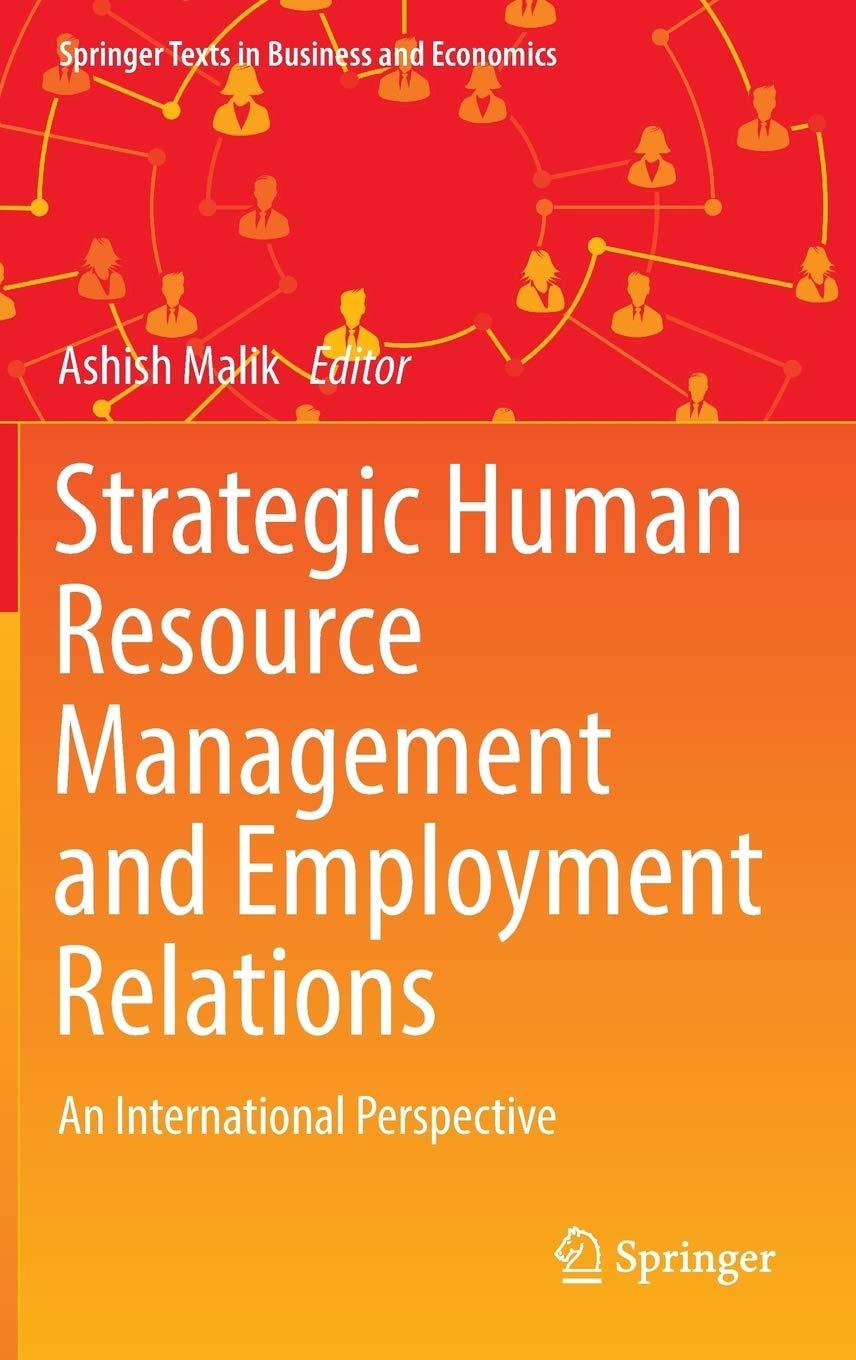This chapter is based on the insight that todays organizations in many national and societal contexts face
Question:
This chapter is based on the insight that today’s organizations in many national and societal contexts face the challenge of managing an increasingly diverse workforce.
This increase in workforce diversity is partly due to a changing business environment, but also due to new technologies and social media, increasing individual mobility, and profound socio-political and economic shifts (Urry 2007). Even though the need to manage a diverse workforce is shared across nations and societies, organizations nonetheless need to do so within specific frameworks. The latter are often country-specific and extend to the very meanings of diversity. For strategic international HRM, this is a relevant finding. It suggests that HR first needs to identify what diversity ‘means’ to those involved prior to being able to manage it or to assess the international and global scope of corporate diversity management campaigns.
Based on this insight, this chapter highlights the meanings of diversity in the German context and provides the reader with the background knowledge for investigating the contextual dimension of diversity.
In multinational companies, HR managers need to design diversity management campaigns in a global context. For understanding how the meanings of diversity might differ across contexts, the concept of re-contextualization is helpful (Brannen 2004). This term was coined by Mary Yoko Brannen (2004) who investigated the success of Disneyland in Japan and its near failure in France. Her study showed that, in the case of Japan, the values and image of Disneyland was successfully translated into the local context, whereas, in the case of France, this did not happen. Brannen concluded that companies cannot be sure that intended meaning, for instance: what Disneyland ‘represents’, will automatically be interpreted the same way in another context. Rather, meaning will be subjected to an unforeseeable and dynamic process of recontextualization, and companies need to monitor this process and its success.
When doing so, they should pay particular attention to the minimum “semantic fit”
which is required for meaning to be successfully linked to a new context.
Bosch also dedicated a section of its webspace to ‘diversity’. In 2013 (Bosch 2013) the diversity webpage is further divided into “gender” and “intercultural competency”.
Diversity management goals were defined as follows (Bosch 2013):
“Besides an equal representation of women and men in leadership positions, our most important goal is the involvement of different cultures in our worldwide work relations.” This means that two diversity markers are explicitly mentioned, namely gender and cultural diversity. However, these are linked to different implications and requirements: Whereas gender equality should be reached and is mentioned as a definite goal, the considerations regarding ‘cultural diversity’ remain fuzzy and are not further specified (what does involvement mean and how can it be measured?).....
Suggested Case Study Questions
1. What are the specifics of the German context, both on corporate and wider levels, and how can they be differentiated into macro-, meso- and micro-levels?
2. How and to what extent are the policies of Robert Bosch representative of the wider frameworks wherein they emerge?
3. How and to what extent are the policies of Robert Bosch related to theoretical insights on diversity management – is this a ‘good’ policy from your perspective and why (not)?
4. Why could the Robert Bosch approach ‘make sense’ to the company?
5. Considering the previous question: It is always easy to judge HR limitations ‘from the outside’. What are the meanings of diversity in your country of origin or societal and national contexts you are familiar with? Which corporate or organizational diversity management aspects have you encountered?
6. What are the challenges and opportunities, and strengths and weaknesses of the German approach to diversity? What are their blind-spots?
7. Why and how can corporate HRM never be ‘context-free’? What HRM theories do you know that argue in favour of the ‘embeddedness’ of corporate HRM?
8. How can national laws and societal sentiments influence corporate diversity management to the better or to the worse?
9. What is re-contextualization and what are the HRM challenges associated with it?
10. Do HRM managers also need to ‘re-contextualize’ themselves in their role as HR managers? If so: How should they achieve semantic fit with multiple contexts in a multinational company or an international HRM environment?
11. Regarding Robert Bosch: Please look into other countries wherein the company operates or compare this company with another company or national context you are familiar with: What aspects of the Bosch understanding of diversity management might be easy or difficult to recontextualize? Why? How would you achieve semantic fit, and is this even possible?
Step by Step Answer:

Strategic Human Resource Management And Employment Relations An International Perspective
ISBN: 9789811303982
1st Edition
Authors: A. Malik





